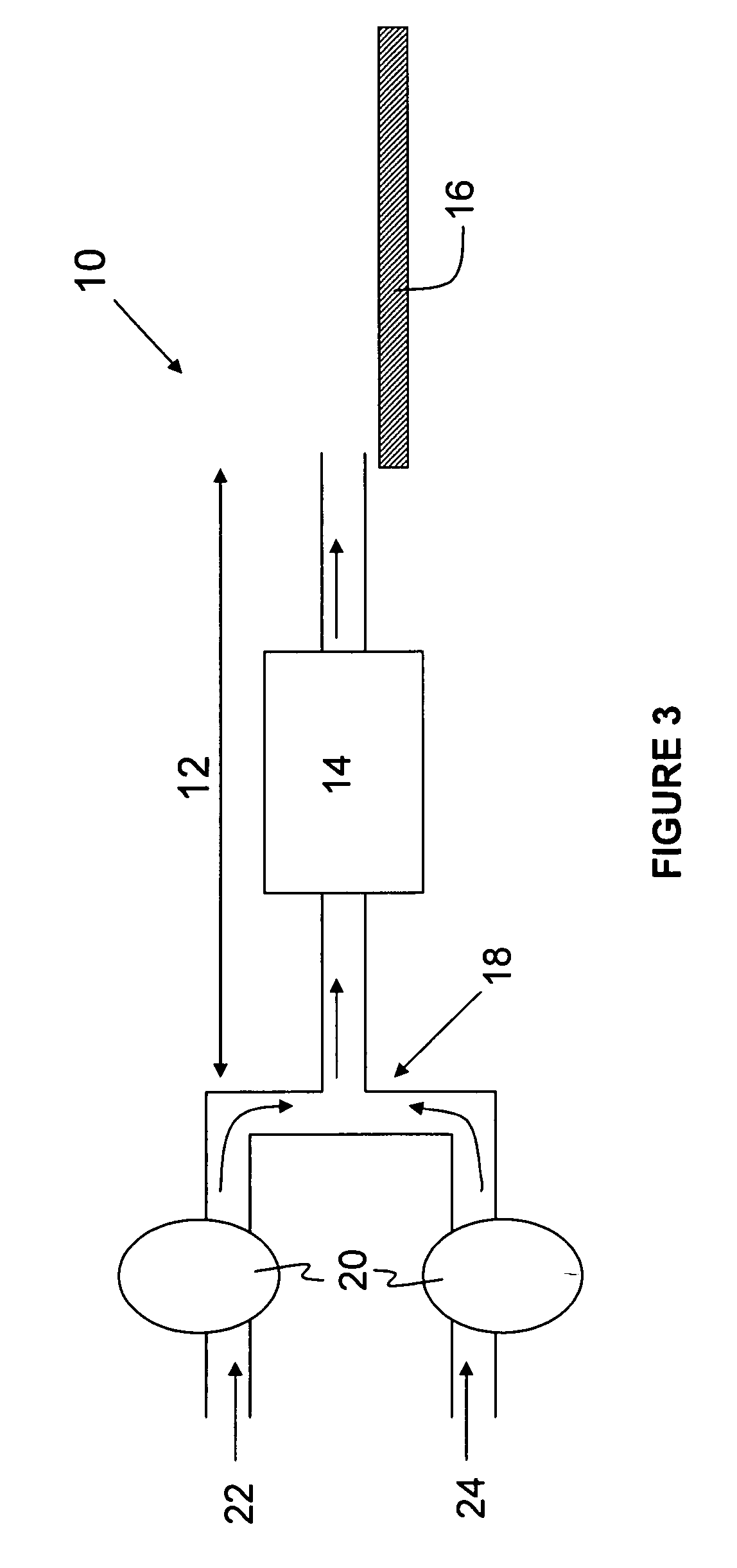High throughput chemical mechanical polishing composition for metal film planarization
a technology of chemical mechanical polishing and composition, applied in metal-working equipment, electrical equipment, lapping machines, etc., can solve the problems of oxide erosion, loss of wafer surface planarity and uniformity,
- Summary
- Abstract
- Description
- Claims
- Application Information
AI Technical Summary
Benefits of technology
Problems solved by technology
Method used
Image
Examples
example 1
[0098]An experiment was performed to determine the optimum delivery flow rate of bulk copper removal formulation to platen 1 during bulk copper removal. Blanket wafers, having a silicon substrate, a dielectric layer, barrier layer, and a 15,000 Å copper layer, were processed using the bulk copper removal formulation on platen 1 of a Mirra tool. The downforce of the platen 1 was 3 psi. The results, including Cu removal rate and within wafer non-uniformity (WIWNU), are illustrated in FIG. 1 and summarized in Table 1 below.
TABLE 1Bulk copper removal formulation flow rateversus copper removal rate and WIWNU.Bulk Cu removalformulation flow rateCu removal rate (RR)(mL min−1)(Å min−1)WIWNU %Figure20092534.381%1A15092344.202%1B15092784.888%1C10090434.643%1D
[0099]Referring to FIG. 2, it can be seen that the flow rate of the bulk copper removal formulation to platen 1 can be reduced from 200 mL min−1 to 150 mL min−1 without any significant loss in copper removal rate or changes to the WIWNU %...
example 2
[0100]An experiment was performed to demonstrate the utility of the present invention. As discussed previously, it is an object of the present invention to provide a process including a single bulk copper removal CMP slurry formulation for planarization of a wafer surface having copper deposited thereon, the formulation having a high copper removal rate, a comparatively low barrier material removal rate, appropriate material selectivity ranges to minimize copper dishing at the onset of barrier material exposure, and good planarization efficiency.
[0101]Blanket wafers, having a silicon substrate, a dielectric layer, barrier layer, and a 15,000 Å copper layer, were processed using the bulk copper removal formulation on platen 1 of a Mirra tool. The downforce of platen 1 was 3 psi. Thereafter, the wafers were transferred to platen 2 of the Mirra tool for processing using the soft-landing and overpolishing formulation. The soft-landing and overpolishing formulation had a bulk copper remo...
example 3
[0108]An experiment was performed to determine the change of coefficient of friction (COF) of a composition that includes frictive agent relative to the same composition without a frictive agent. Specifically, the generic composition without a frictive agent, hereinafter Cerulean-NF (Cer-NF or Cer-0), includes:
[0109]0.8 wt. % of 5-aminotetrazole
[0110]1 wt. % of alumina coated silica
[0111]<0.05 wt. % potassium hydroxide
[0112]water (about 88.9 wt. %)
[0113]The formulation including frictive agent includes Cer-NF and 4% of glycine (hereinafter Cerulean 4 (Cer-4)). Blanket wafers, having a silicon substrate, a dielectric layer, barrier layer, and a 15,000 Å copper layer, were processed using the bulk copper removal formulation on a platen of a Mirra tool. As shown in FIG. 5, increasing downward pressure was applied and the rotating platen was maintained a 120 rpm. It is evident that the COF of the copper surface was increased with the use of Cer-4, and the COF for Ta was decreased with t...
PUM
| Property | Measurement | Unit |
|---|---|---|
| flow rate | aaaaa | aaaaa |
| flow rate | aaaaa | aaaaa |
| flow rate | aaaaa | aaaaa |
Abstract
Description
Claims
Application Information
 Login to View More
Login to View More - R&D
- Intellectual Property
- Life Sciences
- Materials
- Tech Scout
- Unparalleled Data Quality
- Higher Quality Content
- 60% Fewer Hallucinations
Browse by: Latest US Patents, China's latest patents, Technical Efficacy Thesaurus, Application Domain, Technology Topic, Popular Technical Reports.
© 2025 PatSnap. All rights reserved.Legal|Privacy policy|Modern Slavery Act Transparency Statement|Sitemap|About US| Contact US: help@patsnap.com



